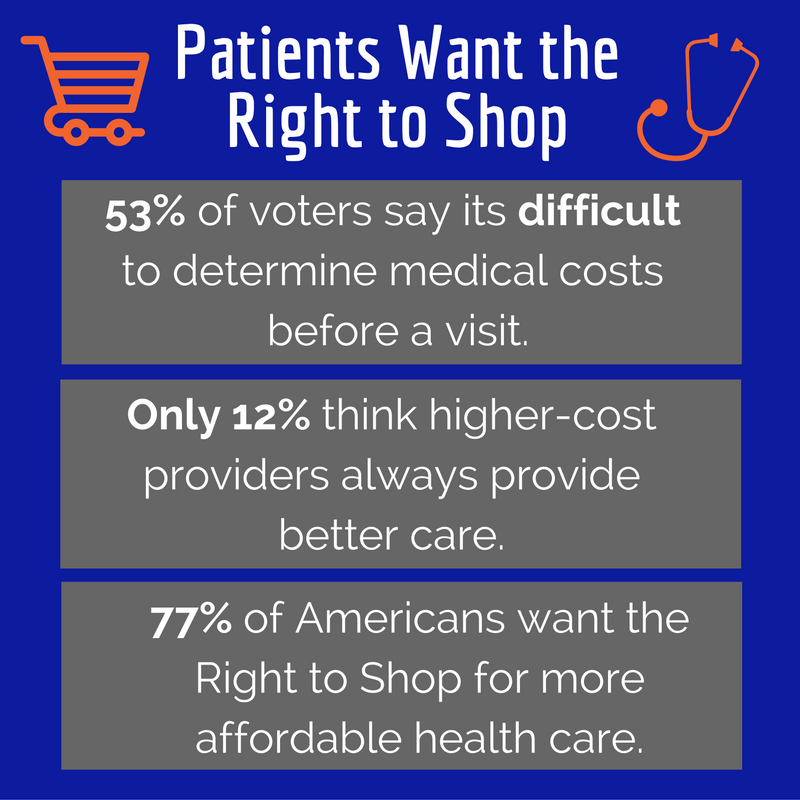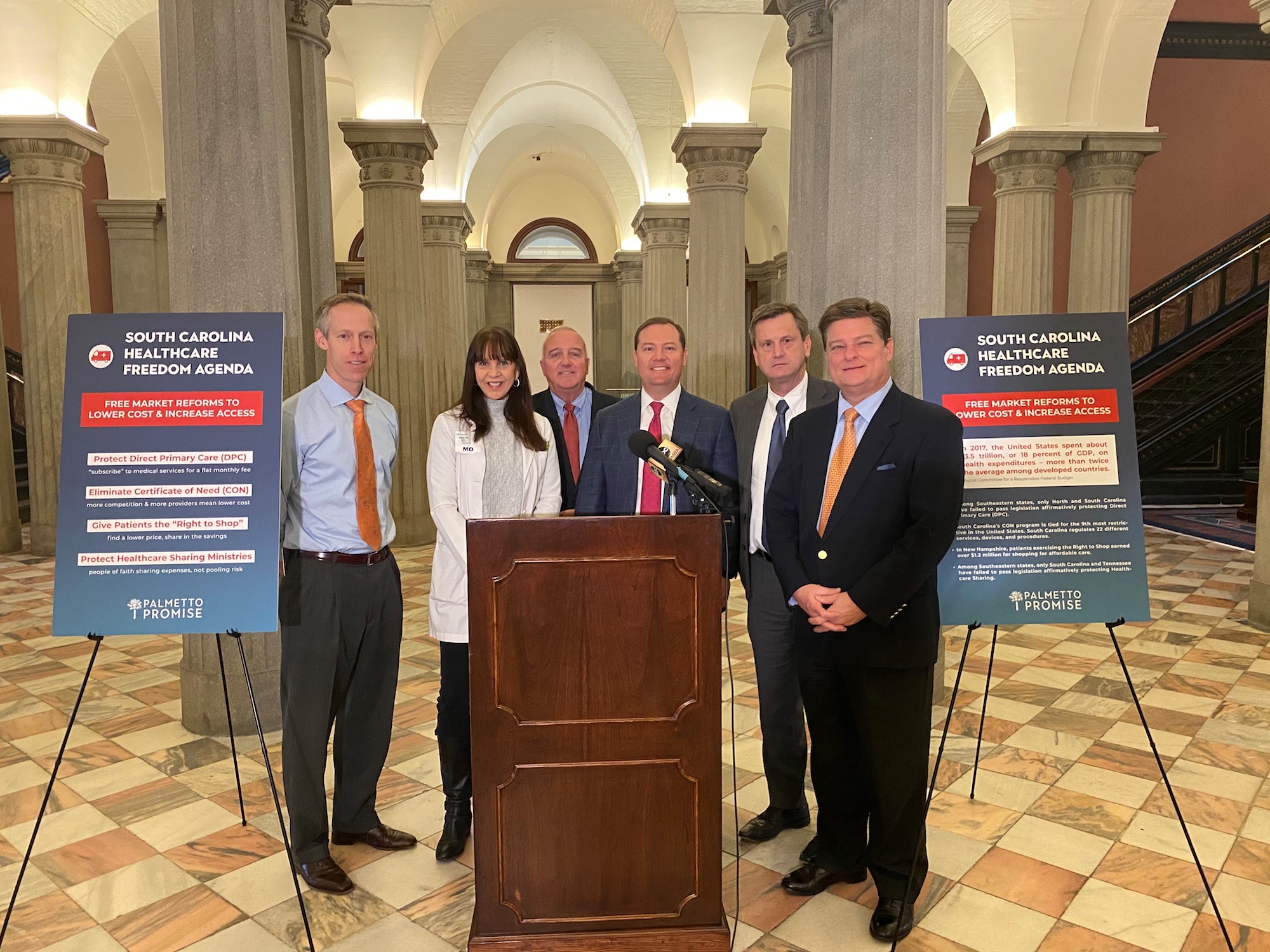The Right to Shop: More Access to Local and Affordable Health Care
More Knowledge, More Access, More Affordable
South Carolina families working to make ends meet are often devastated by arcane medical bills, higher than expected costs, confusing payment plans, and a lack of access to market information about the costs of procedures across provider markets. What’s more, the factors determining the out-of-pocket cost to a patient for health care services are numerous, from level of insurance coverage to location of the provider… even if providers are within just a few miles of each other.
Our friends at the Foundation for Government Accountability (FGA) found that 61% of patients received larger than expected medical bills and over half think it is difficult to determine medical costs before a visit to the doctor. National polls tell us that consumers overwhelmingly want the “right to shop” for medical services.
If “Right to Shop” is adopted in South Carolina, patients and insurance companies will save money, healthcare providers will have incentive to lower health care costs and South Carolinians will have greater knowledge of the type and quality of care available to them in their area.
How “Right to Shop” Works:
- Once a medical procedure has been recommended to you, call or go online to request information about the cost of your procedure
- Choose the best location that offers the procedure at the most affordable cost for you
- Have your procedure at the location of your choice
- Cash in on shared savings
The “Right to Shop” Process:
Right to Shop’s goal is to provide patients with access to information on the out-of-pocket costs they will face after a non-emergency medical procedure. In order for that vision to come to fruition, Right to Shop legislation stipulates that:
- Insurance companies create an incentive program which rewards patients who undergo procedures at a cost less than the average price paid by the insurance company for the same healthcare service. If you can get a colonoscopy at a lower than average cost, you take home some of the savings!
- The procedures for which the carrier offers the shared incentive program are called “shoppable health care services,” providing some reasonable boundaries to the law.
- A “shoppable health care service” may include a mammogram or colonoscopy, but may not include cardiovascular surgery for example.
- At the request of a patient or prospective patient, health care providers across different networks will be required to estimate the total costs associated with a medical procedure within two business days of the request.
- Health care providers and insurance carriers work together to provide an out-of-pocket cost estimate for the patient for as many hospitals and carriers as the patient would like.
- Consumers take home a percentage of the shared savings.
Success by the Numbers:
“Right to Shop” is fairly new legislation, but the results from the program in New Hampshire show that consumers have more access at less cost than they ever had before the law was passed. As a result, citizens are less confused about their medical bills, not surprised by the amount they are required to pay after a procedure, and incentivized to find cheaper healthcare. In New Hampshire:
- 88% of members shopped for more affordable healthcare services
- Shoppers have been rewarded over $1 million for finding more affordable care
- Procedure cost savings have reached over $12 million
- The bill has already been introduced in five more states: Maine, Kansas, Oklahoma, Arizona and South Carolina





